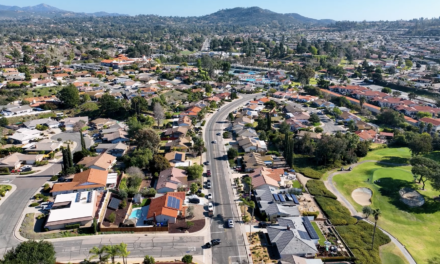The U.S. Department of Veterans Affairs (VA) guarantees mortgages to improve or repair:
- homes already owned and occupied by a veteran; and
- homes in the process of being purchased by a veteran.
However, a lack of guidance from the VA on guaranteeing mortgages on homes requiring extensive repair has meant most lenders do not offer this as a product. In response, the VA has released more extensive instructions on how to process VA-guaranteed mortgages for repairs and improvements.
Related article:
The lender’s process for a VA-guaranteed home improvement mortgage is the same regardless of whether it is an extensive repair or a modest home renovation or improvement, therefore the terms are used interchangeably. [VA Circular 26-18-6 2]
First, the lender verifies the veteran is eligible for the VA’s guaranty and qualifies the veteran for a VA-guaranteed mortgage.
Mortgages eligible to be used for improvements are:
- VA purchase mortgages, to be used when a veteran is purchasing a home they plan to make improvements on; and
- VA regular (cash-out) refinance mortgages, to be used for an already-owned home. [VA Circular 26-18-6 3.a]
Related article:
U.S. Department of Veterans Affairs (VA)-guaranteed mortgages, explained
Next, the lender determines the scope of the improvements.
The criteria for eligible improvements are far-encompassing, as repairs eligible for VA-guaranteed mortgages are those “ordinarily found on similar properties of comparable value in the community.” [VA Circular 26-18-6 3.d]
The lender then orders an appraisal and begins the underwriting process.
With the appraisal in hand, the lender issues a notice of value (NOV).
To determine the correct purchase mortgage amount eligible for VA’s guaranty, take the lesser of the:
- NOV as determined by the VA fee panel appraiser; and
- acquisition cost, which is:
- the contract sales price; plus
- the total cost of improvements;
- contingency reserve (if present);
- inspection fees;
- title update fees; and
- and permits. [VA Circular 26-18-6 3.e(1)]
To determine the refinance mortgage amount eligible for VA’s guaranty, take the lesser of the:
- as-completed NOV; and
- acquisition cost, determined by:
- the existing loan payoff; plus
- total cost of improvements;
- contingency reserve (if present);
- inspection fees;
- title update fees; and
- permits. [VA Circular 26-18-6 3.e(2)]
If a lender believes a project requires a contingency reserve, the maximum reserve is limited to 15% of the improvement cost. Further, any unused contingency reserve funds will be applied to the principal balance — unless it was paid in cash at closing by the veteran. [VA Circular 26-18-6 3.e(3)]
The lender then closes the mortgage and establishes a draw account. The escrow account established may not be comingled with the lender’s other funds. [VA Circular 26-18-6 3.g(8)]
In addition to the 1% mortgage origination charge, the lender may charge the veteran a construction fee up to 2% of the mortgage amount — as long as at least 51% of the mortgage proceeds are paid out while the improvements are being made. When less than 51% of the mortgage proceeds are paid out during construction, the allowable construction fee is up to 1% of the mortgage amount. [VA Circular 26-18-6 3.j]
The lender pays the funding fee within 15 days of the mortgage closing. [VA Circular 26-18-6 3.g(9)]
As improvements are made, funds are disbursed from the draw/escrow account as approved by the veteran. Each time a disbursement is made to the builder or contractor, the veteran needs to give written permission. [VA Circular 26-18-6 3]
Once the improvements are fully completed, the lender contacts the original VA appraiser to conduct a final repair inspection. The lender coordinates the appraisal between the appraiser and the builder. The appraiser will determine the minimum property requirements (MPR) are met and the as-completed value from the original appraisal was achieved. [VA Circular 26-18-6 k(3), (4)]
The Certificate of Occupancy is issued, if applicable to the project.
The VA appraiser signs off on the end of the project and the VA guarantees the loan.














